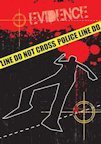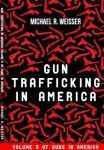Michael R. Weisser's Blog, page 122
February 22, 2015
If Doctors Can Go On The Offense About Vaccinations, They Can Go On The Offense About Guns.
Sean Palfrey is a Boston-based pediatrician who has been a long-time advocate for improving children’s welfare through aggressive public health strategies, including the use of vaccinations to protect kids from all sorts of disease. His latest comment in this regard appeared last week in Huffington, and while you might wonder what this has to do with guns, indulge me for a few paragraphs and let me explain.
 The recent public spat over the efficacy of vaccinating children erupted after a measles outbreak was traced to an amusement park in Southern California, which then prompted the Republicans to try and score a few anti-immigration points by forecasting a potential catastrophe due to infections spread by unvaccinated illegal immigrants, which then led to the usual Republican pandering about why government should be getting into the vaccination game at all. And that a physician turned Presidential candidate used to be against vaccinations but now isn’t sure what he’s for or against, has just muddied the waters a little more.
The recent public spat over the efficacy of vaccinating children erupted after a measles outbreak was traced to an amusement park in Southern California, which then prompted the Republicans to try and score a few anti-immigration points by forecasting a potential catastrophe due to infections spread by unvaccinated illegal immigrants, which then led to the usual Republican pandering about why government should be getting into the vaccination game at all. And that a physician turned Presidential candidate used to be against vaccinations but now isn’t sure what he’s for or against, has just muddied the waters a little more.
For a moment, let’s put all that nonsense behind us and focus on what Sean Palfrey really says. The point he’s making about vaccinations is they protect the human species against diseases for which there is no cure once the infection occurs. In this respect, vaccines become the cure for certain diseases through prevention, whereas we usually think of being cured as what doctors do to us after we get sick. We wouldn’t need government-mandated vaccinations if everyone shared Sean Palfrey’s belief about the positive effects of this proactive response to medical risk. But prevention of disease is simply too important to be left to everybody’s individual choice.
One disease which continues to escape government-mandated controls is something called gun violence, which kills more than 30,000 Americans each year. And if the NRA and other pro-gun folks want to continue to debase this discussion by claiming that these deaths have nothing to do with guns, that’s fine. But notice that I’m not casting blame on anyone for these gun deaths; I’m not saying that people with guns are good or bad. I’m simply saying that, at the end of the day, if someone puts a loaded gun to their own head or to someone else’s head and pulls the trigger, I guarantee you that someone will be dead. And death from anything other than natural causes is a medical issue and if it is not brought under control, it constitutes a medical risk.
A recent study confirms what I have long suspected, namely, that most people who visit doctors really don’t care, nor are they insulted or angered when the physician asks them whether they own guns. And while the study was based on a small sample of patients, it was conducted in Texas, where opposition to more restrictive gun laws ranges from fierce to worse. The fact is that nobody ever committed an act of gun violence, no matter how it’s defined, without first getting hold of a gun. And since, by definition, none of the 31,000 Americans who will die from gunshots this year will die a natural death, physicians need to adopt, in the words of Sean Palfrey, the strongest possible defense in order to go on the offense regarding the medical risks of guns.
If a gun-owning patient believes that anything said by a doctor about guns is out of bounds, he’s not required to accept the doctor’s advice. And God knows there are plenty of us walking around, sicut me, refusing to follow medical advice about our smoking, our drinking, our guns or our weight. But the government’s inability to go on the offense about gun violence has absolutely nothing to do with any evidence-based knowledge that having guns around reduces medical risk. And until a credible, evidence-based argument proving that guns reduce harm is produced by the pro-gun side, physicians should continue to ask patients to immunize themselves against gun violence by getting rid of the guns.

February 20, 2015
Do Campus Guns Prevent Campus Rape? They Do And They Don’t.
Now that the gun lobby has succeeded in getting all 50 states to issue some form of concealed-carry license, the next battle which they want to fight is over gun-free zones. And while states have passed laws liberalizing the possession of concealed weapons in establishments serving liquor, houses of worship and other locations traditionally considered pistole verboten, the locations where pro-gun heat is being turned up are the nation’s college campuses which tend, by and large, to have fairly restrictive policies on students and faculty walking around with guns.
Currently only a handful of states have fairly liberal gun policies in effect, seventeen states forbid guns altogether and the remainder leave it up to individual school option, but in most such places a no-gun policy tends to be the rule. You would think, incidentally, that states with blanket prohibitions against guns would be located in the Northeast and other parts of the country that both lean liberal and don’t have high percentages of residents who own guns. In fact, more than half of the strongest, no-guns-on-campus states are located in the South, where gun laws in general tend to be the least strict. Even Florida, known as the “gunshine” state, forbids guns on all college campuses; ditto Georgia which last year opened up all sorts of public locations to concealed carry of guns.
 The campaign to allow guns on campus recently hit the national news when state legislators in Florida and Nevada introduced pro-gun campus bills and linked the necessity for ending gun-free college zones to what continues to be a complicated and hot-button issue; namely, the question of campus rape. The sponsor of the Nevada bill, Michele Fiore (R-Las Vegas) may have stuck her foot a little too far into her mouth when she referred to the “hot little girls on campus” who needed to protect themselves, and in case you’re still wondering, her reference to heat had nothing to do with staying outside in the sun.
The campaign to allow guns on campus recently hit the national news when state legislators in Florida and Nevada introduced pro-gun campus bills and linked the necessity for ending gun-free college zones to what continues to be a complicated and hot-button issue; namely, the question of campus rape. The sponsor of the Nevada bill, Michele Fiore (R-Las Vegas) may have stuck her foot a little too far into her mouth when she referred to the “hot little girls on campus” who needed to protect themselves, and in case you’re still wondering, her reference to heat had nothing to do with staying outside in the sun.
The issue of campus rape keeps bubbling back and forth between those who claim that the numbers don’t justify all the recent concern, as opposed to those who declare with equal certainty that the numbers are meaningless because young women, particularly on campuses with large residential populations, are afraid to come forward and report a rape. Much campus sexual assaults occur during ‘animal house’-style parties, and while collage administrations are on notice to be more diligent in monitoring dangerous behavior, no educational institution wants to be considered just a party school whose lack of campus security puts students at risk.
One group that has used the campus rape issue to increase its visibility and perhaps its membership is a group called Students for Concealed Carry, which claims to have more than 40,000 members which is pretty close to the number of ‘likes’ on their Facebook page. The group gets lots of promotional help from the NRA (gee – what a surprise) and while they tend to promote their demand for campus gun rights as part of a loosely-defined libertarianism, their website motto states explicitly that guns are “an effective means of self defense.”
I really don’t know anything about sexual assault so I’ll let other experts explain the ins and outs as well as the various theories for the prevention of same. But I do know something about guns and I also know a lot about whether guns represent, a la the SCC website, an “effective” means of defense. And the truth is that guns do represent an effective means of defense against assaults, but they are no more effective than other methods, such as running away or calling for help. And this isn’t my opinion, it’s research published by the pro-gun criminologist Gary Kleck. And the good news about calling for help is that a droid can’t do much damage if it falls into the wrong hands. Can anyone say that about guns?
Thanks Sue.
Available on Amazon.

February 19, 2015
Here Comes National Concealed-Carry Again And Both Sides Are Looking Forward To The Fight.
Once again there appears to be a well-orchestrated push in Washington for a national concealed-carry law, which is actually new wine in old bottles since it was initially introduced by Senator Larry Craig during the Clinton years. Craig was a Board member of the NRA, a position which he eventually relinquished when he was arrested in an airport men’s room for trying (he claimed) to look for his keys after they fell on the floor. But Craig’s legacy as the NRA champion was then assumed by Sen. John Cornyn (R-TX) who has once again introduced the national CCW bill and this time believes he will get it to President Obama’s desk. The bill failed by 3 votes in 2013 and no doubt the Bomber will veto the bill if it slides into the Oval office this time around. But maybe we’re only two years away from a Republican sitting in the White House and maybe the ol’ Wild West will finally become law of the land.
 The problem for the pro-gun supporters of this legislation is that they need 7 votes which they can gain if they can pick up some votes from Democrats like Joe Manchin, who voted for the bill in 2013. The opponents of the measure are also hard at work and are aiming most of their fire at Republicans like Pat Toomey who voted for expanded background checks after Sandy Hook. No doubt representatives of both the NRA and the Bloomberg machine are letting Senators on both sides know that they will be scoring the votes, and no doubt some Senators, regardless of their personal feelings on the issue, will be swayed by whether their vote will help or hurt them when they face the voters in 2016.
The problem for the pro-gun supporters of this legislation is that they need 7 votes which they can gain if they can pick up some votes from Democrats like Joe Manchin, who voted for the bill in 2013. The opponents of the measure are also hard at work and are aiming most of their fire at Republicans like Pat Toomey who voted for expanded background checks after Sandy Hook. No doubt representatives of both the NRA and the Bloomberg machine are letting Senators on both sides know that they will be scoring the votes, and no doubt some Senators, regardless of their personal feelings on the issue, will be swayed by whether their vote will help or hurt them when they face the voters in 2016.
I think the argument about national CCW, while it appears to be a hot-button issue on both sides, is really much ado about very little, notwithstanding the lengthy commentary by Gail Collins in today’s New York Times. Gail makes the point that legal and training requirements for CCW vary significantly from state to state. Therefore, walking around with a bulge in your pocket which doesn’t mean you were glad to see her might require a completely different level of proficiency or legal fitness in New York than what is required in Alabama or Tennessee. Unfortunately Gail then goes off the deep end when she evokes the image of people “roaming the streets waving out-of-state gun permits,” but she’s right-on in assuming that this type of legislative battle can do wonders for increasing the membership rolls of the NRA.
The reason I think national CCW issue is overblown is that nobody has ever attempted to figure out whether the issuance of more concealed-carry permits means that more people are actually walking around armed. Supporters of the bill claim that arming civilians is an important measure in the fight against violent crime. But studies that link crime decline to increased CCW are so full of holes that anyone who really believes that armed civilians make the country safer can be excused for also believing that Martians landed in Area 51. Opponents of the bill raise the spectre of an increase in gun homicides by people with CCW who, like the murderous dope in Chapel Hill, shot and killed three Muslim-American students with a legally-carried gun. But the Violence Policy Center’s study of CCW-legal shootings notwithstanding, the number of intentional, fatal gun injuries committed by someone with a concealed-carry license is still, statistically speaking, a rare event.
If nothing else, a national CCW law would require the development of a nationwide network that would allow law enforcement in one state to check the validity of CCW permits issued somewhere else. Stop to think about it, wouldn’t such a system be akin to registering everyone with CCW, hence nothing more than another form of national gun control? I don’t notice the Constitutional Carry gang worrying about that one at all.
Available at Amazon.

February 16, 2015
A Tale Of Two States: Vermont And Texas Debate Gun Bills.
There can’t be two states in these United States more different than Vermont and Texas, right? The Green Mountain State is quintessential New England, with picturesque town squares, maple sap running from the trees and let’s not forget America’s only Socialist, aka Senator Bernie Sanders, who just might try to run for President in 2016. And what can we say about the Lone Star State? Remember the Alamo, the best doggone chili and barbeque this side of the Pecos and the Rio Grande, and a former Governor named Rick Perry who might also try to run (again) for President in 2016.

Sen. Bernie Sanders
But despite the clear contrasts between these two states, in one way they are very similar, and the similarity was on display last week when the two State Legislatures held public hearings on new laws about guns. In the case of Vermont, the bills being considered would have tightened gun regulations, bringing in background checks on private sales and setting standards for taking guns away from people at risk to others or themselves; in the case of Texas the bills will allow open carry of handguns and end the long-standing practice of considering college campuses to be gun-free zones.

Gov. Rick Perry
Two different states, two different types of gun bills, but one thing in common, namely, the degree to which the pro-gun community was organized, turned out in force and made arguments which, rightly or wrongly, shaped the public debate. In Texas the push for open carry was led by an organization called Open Carry Texas which gained notoriety last year when its members publicly disavowed the NRA after the latter organization denounced gun-owning ‘extremists’ who were parading around with their guns. Last week in the run-up to the legislative hearings on the new laws, a group of open carry agitators not only openly threatened a gun-owning state legislator in his office, but also showed up at the hearing and loudly denounced anyone who would commit ‘treason’ by not voting the right way.
In Vermont, the debate over a gun bill occasioned the largest turnout at the State House since the debate over civil unions in 2000, and while supporters of the legislation cited personal anecdotes about a family shooting or the psychological damage caused by schoolchildren having to undergo active-shooter training, the prevailing sentiment during the debate was summed up by one female gun enthusiast who said, “If I’m being assaulted on a city street, I’d rather have my .38 with me than a copy of Senate bill 31.” Much of the credit for packing the gallery with orange-shirted gun owners should be given to Gun Owners of Vermont, which says it’s committed to a “no-compromise position against gun control” which is ironic since Vermont has no state-level restrictions on gun ownership or CCW at all.
This is not to say that folks who took a dim view of the proposed gun bills didn’t show up. There’s a group in Vermont known as Gun Sense Vermont, whose members appeared at the hearing and voiced their concerns. In Texas, the open carry gang got a little taste of their own tactics when a bodyguard hired by Moms Demand Action allegedly tried to stop Open Carry’s C.J. Grisholm, from filming an interview with a Moms activist by grabbing his phone. This brief incident occasioned all kinds of heated rhetoric on right-wing blogs about how the Moms group (behind which, of course, is the sinister Watts-Bloomberg combine) has no respect for the 1st Amendment, never mind the beloved 2nd.
I don’t know who is going to win the legislative contest over gun laws in either state, but the pro-gun forces clearly won and continue to win the argument in the public, and certainly the internet space. The plain truth is that fear-mongering sells, while reasonable and earnest debate gets little or no airtime at all. For that reason, the gun-sense community may need to re-think the manner in which they present their point of view. In the public argument about guns, opinions seem to trump the facts every time.
Buy it on .

February 15, 2015
Does the Brennan Center Crime Report Break New Ground?
The good news about crime is that not only has it declined by more than 50% in the last two decades, but notwithstanding a slowing in the rate of decline from year to year, the overall trends keep going down. The latest national estimate published by the FBI for 2013 shows a drop of 4.4% in violent crime from 2012, which translates into a twenty-year drop of more than fifty percent. The decline in cities like New York and Los Angeles is even more dramatic, with reductions in violent crime, particularly homicide, of more than 70 percent.
Trying to figure out the reasons for this decline has spawned a veritable cottage industry engaging scholars from every relevant academic field. Out of this handiwork has emerged 16 theories considered by the research community to have some degree of validity, and now for the first time a study has been published by the Brennan Center which attempts to determine the relative degree to which each theory can be used to explain the crime decline as a whole. Unfortunately, what the Brennan report shows is that none of the theories appears to explain anything more than a marginal change in serious crime, and the factor that has been cited most consistently for its positive impact on crime over the past twenty years – incarceration – may actually have the reverse effect.
 According to the Brennan researchers, the positive correlation between rates of incarceration and rates of violent crime probably ended around 2000, with the continued growth of the prison population having no effect on crime rates at all. This is confirmed by looking at states in which the size of the prison population has declined, but violent crime rates have continued to go down. The result is what Nobel Prize winner Joseph Stiglitz calls “not only inhumane, it is an economic folly.”
According to the Brennan researchers, the positive correlation between rates of incarceration and rates of violent crime probably ended around 2000, with the continued growth of the prison population having no effect on crime rates at all. This is confirmed by looking at states in which the size of the prison population has declined, but violent crime rates have continued to go down. The result is what Nobel Prize winner Joseph Stiglitz calls “not only inhumane, it is an economic folly.”
The other major issue examined by Brennan is the use of CompStat and other digital, data-driven policing methods that first started in New York and appear to be responsible for a 5 to 15 percent crime decrease in cities where it has been deployed. The problem with this finding, however, is that crime also declined more or less to the same degree in cities that didn’t adopt CompStat, and in cities that did adopt the CompStat system, the most significant declines in crime rates took place before it was deployed, or occurred simultaneously with significant ( and costly) increases in the number of police.
The real problem with the whole school of American crime-decline is that the phenomenon is hardly unique to America at all. Crime in England has dropped by almost 50% in the last twenty years, ditto in the European Union, where the drop in crime over the last ten years is almost the same as in the United States. And Europe has neither increased its incarceration rates nor jumped on the Compstat bandwagon as is the case in many cities throughout the US. It should also be mentioned that Europe has not experienced anywhere near the degree of economic recovery that has occurred here since 2008, yet crime rates everywhere in the EU continue to fall.
In all of the research on crime that is summarized by Brennan, one great omission stands out. According to the FBI, violent crimes fell from 1,857,670 in 1994 to 1,214,464 in 2012, and over that same period, serious property crimes dropped from 12,131,873 to 8,975,438. Which means that over this period of time, 3,798,846 serious crimes were not committed because crime rates kept going down. If Brennan is correct and incarceration accounted for a 5%-7% decline in crime, then somewhere around 200,000 of these crimes weren’t committed because the people who otherwise might have committed these crimes were in jail. But this means that several million would-be perpetrators chose a different path. With all due respect to theories about policing, abortions, CCW, lead paint and all the rest, shouldn’t we figure out a way to talk to them?

February 14, 2015
Does The Gun Industry Create Jobs? Only If The Gain Is Worth The Loss.
This week there was an interesting ripple of gun news out of Indiana where the State Senate began action on a Republican-backed bill that would immunize the gun industry from lawsuits and terminate a civil action against Smith & Wesson and other gun makers that was initiated by the City of Gary in 1999. The suit is similar to a wave of federal suits which attempted to hold the gun industry liable for gun violence but were dismissed after George W. Bush signed a law that immunized the industry in 2005. A year later an Indiana appeals court ruled that the Gary suit was still valid, which is where things sat until last week’s effort by State Senator Jim Tomes and others to get rid of the issue once and for all.
What I found interesting about the issue was the statement attributed to Tomes that the existence of the lawsuit made it impossible for Indiana to attract the gun industry which represented an opportunity for new jobs since the industry’s output, according to Tomes, was worth $37 billion a year. This number comes from a report issued in 2013 by the NSSF which takes the estimated economic value of the industry’s entire output, which is computed by adding together the wages paid to everyone employed in the industry, along with the revenue of every company supplying products sold by the industry.
 There’s only one little problem with this information. The $37 billion figure is based on the total output of manufacturers, suppliers and induced expenditures. But if I own a company that makes guns, for example, and the cost of the gun that I sell to a wholesaler includes what I paid a supplier for a part that I use in manufacturing that gun, then adding his revenue to my revenue overstates the total value of the finished product I sold by whatever amount it cost me to add his part to my gun. In addition, induced expenditures are just an estimate of the percentage of wages that the average consumer spends on everything he consumes, which may or may not be a real number that can be compared to numbers based on wages, profits or sales.
There’s only one little problem with this information. The $37 billion figure is based on the total output of manufacturers, suppliers and induced expenditures. But if I own a company that makes guns, for example, and the cost of the gun that I sell to a wholesaler includes what I paid a supplier for a part that I use in manufacturing that gun, then adding his revenue to my revenue overstates the total value of the finished product I sold by whatever amount it cost me to add his part to my gun. In addition, induced expenditures are just an estimate of the percentage of wages that the average consumer spends on everything he consumes, which may or may not be a real number that can be compared to numbers based on wages, profits or sales.
Okay guys, let’s cut the bullshit and get down to business. The bottom line is that the industry employs 112,000 people who get paid an average of $40,000 a year. In other words, if the gun business disappeared tomorrow, 112,000 people would be out of work and the GDP would take a hit of fufteen billion bucks; i.e., total revenues plus what they paid the help. Actually, that’s nothing to sneeze at, considering that the entire retail sporting goods market generates about $60 billion in sales revenue each year.
But what the gun industry always likes to ignore in touting its economic strength is the downside of what its products cost in terms of the financial toll of 11,000 homicides and 40,000-50,000 injuries each year. According to the CDC, the medical costs of non-fatal and fatal gun injuries runs between $2 and $3 billion a year. While we don’t have a good figure on what these injuries mean in terms of lost income, it wouldn’t be unreasonable to peg that number at somewhere between $10 and $14 billion a year, particularly since many shooting victims survive the assault but are too badly injured to ever rejoin the workforce again.
Comparing the economic losses generated by guns against the economic contribution that the gun industry makes to the GDP, we end up in a zero-sum game. For every person who pulls down a decent wage from making or selling guns, someone else takes a bullet, the cost of which completely eliminates the financial value that the gun used in that assault represents. If State Senator Jim Tomes wants to promote the idea that the gun industry creates all kinds of good-paying jobs, someone should show him the other side of the ledger and see if he can understand that guns versus gun violence equals no economic gain at all.
Print edition at Amazon.

February 13, 2015
Want To End Gun Violence? Stop Settling Arguments With Guns.
As soon as the word got around last week that a middle-aged, white man shot three young Muslim-Americans in Chapel Hill, the net exploded with the usual speculation about whether it was a hate crime, an attack on the Muslim religion, a civil rights assault, and so forth and so on. While the police haven’t yet ruled out the possibility of religious or ethnic bigotry, the preliminary indication is that the gunfire erupted during a dispute over a parking a car. Three young, lovely human beings are dead because nobody could figure out how to find an empty parking space in a wide-open suburban parking zone.
Last year, a highly-decorated, retired police officer walked into a matinee showing of a movie in a suburb of Tampa and found himself sitting behind a young man who was texting messages to his daughter before the movie began. An argument over whether the younger man should continue texting erupted, one thing led to another, the retired cop pulled out a gun and that was that. At the time that these two gentlemen decided that staying put was more important than one of them moving to another location and thus avoiding any problem altogether, the theater audience filled less than 30 seats.
If you haven’t figured out the parallel between these two utterly senseless shootings, let me tell you what it is: nobody knows how to back down. In each situation a man was legally armed, no doubt walking around with a weapon to protect himself against crime. Of course the armed guys weren’t going to back down. Why should they? They had guns. As for the victims, they weren’t about to walk away either. After all, who were they to back down from a dispute in which they no doubt were in the right?
For all the talk about why the good guys need guns to protect everyone from the bad guys, the truth is that more than 90% of the 31,000 gun homicides that occur each year are the result of someone’s inability to back down. It’s what we call a lack of anger management, and if your anger gets out of control, being able to put your hands on a gun won’t result in protecting yourself against crime or against anything else, including anger directed at yourself. It will probably result in you or someone else being seriously injured or seriously dead.
 According to the FBI, less than 15% of homicides each year occur during the commission of a serious crime; i.e., robbery, larceny, burglary or rape. On the other hand, at least 4 out of 5 homicides grow out of arguments, and these arguments involve people who know each other. And we aren’t talking about casual acquaintances – we’re talking about people who knew each other on a continuous basis and had been arguing and fighting over a period of time. The personal connection between shooter and victim in domestic disputes accounts for virtually every single killing in which the victim is a female (who are 15% of all murder victims each year) and accounts for 100% of all suicide victims who, by definition, have allowed their anger at themselves or others to get out of control.
According to the FBI, less than 15% of homicides each year occur during the commission of a serious crime; i.e., robbery, larceny, burglary or rape. On the other hand, at least 4 out of 5 homicides grow out of arguments, and these arguments involve people who know each other. And we aren’t talking about casual acquaintances – we’re talking about people who knew each other on a continuous basis and had been arguing and fighting over a period of time. The personal connection between shooter and victim in domestic disputes accounts for virtually every single killing in which the victim is a female (who are 15% of all murder victims each year) and accounts for 100% of all suicide victims who, by definition, have allowed their anger at themselves or others to get out of control.
It’s important to remember that even when we are dealing with violence as a criminal offense, more than 1 million violent crimes were reported to the police in 2013, of which only 1% involved homicides using a gun. And the fact that someone has a propensity to behave violently doesn’t ipso facto mean that they would ever express this anger by using a gun. But there is no other form of personal behavior that is as dangerous and costly as pulling a trigger at yourself or someone else. And I don’t think we will get very far just by trying to identify the most violent among us and then figuring out how to keep guns out of their hands. Wouldn’t it be much easier to just get rid of the guns?
On Amazon.

February 12, 2015
The Gun Guys Win An Important Court Case – But I’m Not Sure Anyone Loses.
In what could turn out to be the most important legal decision since the SCOTUS affirmed private gun ownership as a Constitutional right in 2008, a Federal District Judge in Texas, Reed O’Connor, has just issued a ruling which basically invalidates, actually it really demolishes the entire Federal gun regulatory infrastructure that has been growing and growing since the feds got into the business of regulating gun ownership back in 1938. The 1938 law not only set licensing standards for gun dealers, but also required that dealers and gun customers reside in the same state. Congress re-visited the law in 1968 and at that time not only defined certain groups of ‘prohibited persons’ who could not purchase guns, but ultimately granted ATF the authority to manage the whole regulatory system from end to end.
The ban on requiring gun purchasers to only patronize dealers in their home state was partially lifted in 1986 with a further revision of the law that allowed individuals to purchase long guns in states other than where they lived, but the limitation on in-state handgun purchases remained in effect until Judge O’Connor found that it not only violated the 2nd Amendment’s right to bear arms, but was also an unreasonable limitation on interstate commerce and trade.
 What O’Connor pointed to in his decision to allow interstate purchase of handguns was the implementation of the Brady bill, which requires all gun dealers to perform a background check (NICS) at the point of sale before transferring a gun. And since any dealer, no matter where he’s located, can perform such a NICS check, what rationale could still exist for forcing a buyer to only do business with a dealer in his own state? And while the whole purpose of the in-state purchase requirement was to make it more difficult for the ‘bad guys’ to get their hands on a gun such as by crossing the Potomac River to go from gun-nasty District of Columbia to gun-friendly Virginia, the whole regulatory system, as O’Connor pointed out, regulates purchases by the ‘good guys,’ who aren’t buying guns for the wrong reasons anyway.
What O’Connor pointed to in his decision to allow interstate purchase of handguns was the implementation of the Brady bill, which requires all gun dealers to perform a background check (NICS) at the point of sale before transferring a gun. And since any dealer, no matter where he’s located, can perform such a NICS check, what rationale could still exist for forcing a buyer to only do business with a dealer in his own state? And while the whole purpose of the in-state purchase requirement was to make it more difficult for the ‘bad guys’ to get their hands on a gun such as by crossing the Potomac River to go from gun-nasty District of Columbia to gun-friendly Virginia, the whole regulatory system, as O’Connor pointed out, regulates purchases by the ‘good guys,’ who aren’t buying guns for the wrong reasons anyway.
Unfortunately for gun nuts like myself and the two gun buyers who brought this suit in Federal court, I have a strong feeling that Judge O’Connor’s decision will be overturned either at the Circuit level or if the case goes up to the Supreme Court. Because if this ruling were allowed to stand, it would throw open the whole issue of whether the feds should be regulating gun ownership at all. And while folks who believe that regulating guns is an essential requisite for the ongoing effort to reduce gun violence, I can tell you that, opinion polls notwithstanding, there’s not a single gun guy out there who would be at all upset if he never had to fill out another ATF form 4473 (which is how the background check is performed.)
The other problem with O’Connor’s ruling is that some of the reasons proferred for his decision seem to be quite a reach. He criticized the government, for example, for using data from the 1968 GCA to support the idea that the current ban on interstate handgun sales should be allowed to stand, but he has to know that more recent data shows exactly the same thing. And while this is the first court test on government gun regulation in which the decision was based on strict, rather than intermediate scrutiny (meaning that the law in question has to respond exactly to whatever issue is being addressed), O’Connor’s argument will probably not displace the government’s ability to show a “compelling interest” in the regulation of guns.
This decision does not throw into question recent efforts to promote comprehensive background checks at the state, rather than the federal level. If anything, it forces us to ask whether a national regulatory system outdated by advances in technology serves any useful purpose at all. That’s a conversation we should always be willing to hold – and not just when it concerns guns.
Kindle edition is here.

February 10, 2015
Not All Physicians Think Guns Are Bad – A Few Think They Are Very Good.
Last month a 3-year old in New Mexico grabbed his mother’s gun and shot both Mommy and Daddy, although luckily both parents survived. The previous month in Idaho, Mommy wasn’t so lucky when her 2-year old pulled a gun out of her purse and shot her to death. Both of these senseless, ridiculous events provoked the usual storm of media coverage leading to the predictable condemnation of guns on the one hand and defense of guns on the other.
Don’t get me wrong. We are all human and we all do stupid, senseless things, from driving when we’ve had too much to drink, to sitting in a full bathtub while trying to plug a hair dryer with a loose wire into the wall. But what’s different in the case of these gun accidents is that we’re not talking about something as important as an automobile or even as necessary as looking the best we can before we leave home for work. We are talking about the decision to walk around with a gun, based on the idea that guns protect us from crime.
 I have no issue with people who decide to carry a gun and I have never written a single word calling for limits on CCW or gun ownership, believe it or not. But I think that if people decide to buy or carry a gun for self-defense, they should understand the risk involved, and not let the gun industry’s marketing serve as the final word. Unfortunately, some of the most uninformed and blatantly misleading information about guns is provided by a small group of physicians who should know better, if only because physicians are the one profession in which decisions about risk can only be driven by evidence-based knowledge and not by their own personal views of what’s good for a patient’s health. It’s a group of medical crackpots called Doctors for Responsible Gun Ownership, which began life in the mid-1990’s as a sycophantic, pro-NRA effort to defund gun research coming out of the CDC. They claim to have a network of more than 1,400 health professionals but their website, associated with the 2nd Amendment Foundation, is just a blog on which several physicians post commentaries whose distortions and downright falsehoods have been the subject of more than one of my own posts.
I have no issue with people who decide to carry a gun and I have never written a single word calling for limits on CCW or gun ownership, believe it or not. But I think that if people decide to buy or carry a gun for self-defense, they should understand the risk involved, and not let the gun industry’s marketing serve as the final word. Unfortunately, some of the most uninformed and blatantly misleading information about guns is provided by a small group of physicians who should know better, if only because physicians are the one profession in which decisions about risk can only be driven by evidence-based knowledge and not by their own personal views of what’s good for a patient’s health. It’s a group of medical crackpots called Doctors for Responsible Gun Ownership, which began life in the mid-1990’s as a sycophantic, pro-NRA effort to defund gun research coming out of the CDC. They claim to have a network of more than 1,400 health professionals but their website, associated with the 2nd Amendment Foundation, is just a blog on which several physicians post commentaries whose distortions and downright falsehoods have been the subject of more than one of my own posts.
Just to be clear, I don’t have any issue with anyone who wants to opine on any subject at all. But when a professional dispenses professional advice that runs counter to the accepted practices and policies of his profession, then we’re not just dealing with idle talk. In the case of medicine, we are dealing with advice which, if followed by patients, could result in serious medical harm. To cite one example, in a recent DRGO post, the physician-author claims that “research shows how more guns in the right hands can minimize violence.” There is no such research, at least none that meets even a minimal, evidence-based standard. Is this physician counseling someone concerned about violence to go out and buy a gun even though he can’t point to a single, evidence-based study that validates his point of view?
To show you how loony and unprofessional the DRGO group really is, their website carries a commentary by Jane Orient, a physician who told a conspiracy-minded web-hosted talk show that more than 100,000 West Africans who might be infected with Ebola were sitting in Central America getting ready to cross into the United States. If Jane Orient is now the standard by which DRGO defines statements about medical risks from guns, Ebola or anything else, it becomes impossible to imagine that physicians belonging to this organization should be counseling on health risks at all. But the point is that these medical charlatans don’t believe that guns are a risk. And they are happy and even proud to promote this nonsense because they don’t support the Hippocratic Oath. They support the marketing strategy of the NRA. In the interests of full disclosure, I’d love to know how much and to what degree the 2nd Amendment Foundation is supporting them.

February 9, 2015
Can A Church Tell Walmart What Kinds Of Guns To Sell? This Church Thinks It Can.
Sooner or later it figures that someone would begin to follow the path blazed by Shannon Watts and her ladies and begin to view retail outlets not just as places where some good PR could be generated by demonstrating against guns, but as financial institutions whose balance sheets might make them targets for shareholder concerns. And now one of America’s most storied institutions, New York’s Trinity Church, has decided to voice its concern about gun violence by asking Walmart, whose shares it happens to own , to stop selling the assault-style rifles that were used by James Holmes in Aurora and Adam Lanza at Sandy Hook.
The Church, which sits on Lower Broadway across the street from where Wall Street begins, is asking the company to include a proxy in this year’s shareholder meeting that would require the company’s Board to oversee the sale of “products that especially endanger public safety and well-being, risk impairing the company’s reputation, or offend the family and community values integral to the company’s brand.” Walmart got the SEC to issue an order preventing the proposal from going before the shareholders in 2014, hence Trinity’s decision to take the matter to federal court. In November, the U.S. District Court decided in favor of Trinity which provoked an appeal by Walmart based on the idea that the Board should not be in a position to decid day-to-day operations of the stores. Now the case is headed to the Third Circuit Court of Appeals, probably to be heard in early March.
 This case rests partially on deciding whether the owners of a public company can decide how the company should be run, but it also rests on the notion that Walmart is selling a product that, because it “endangers public safety,” should not be sold at all. This is very similar to the idea behind the lawsuit against Bushmaster filed by the parents of some of the victims at Sandy Hook, namely, that Bushmaster should be held liable for the damages caused by a type of gun which, because of its lethality, that should not be put into civilian hands.
This case rests partially on deciding whether the owners of a public company can decide how the company should be run, but it also rests on the notion that Walmart is selling a product that, because it “endangers public safety,” should not be sold at all. This is very similar to the idea behind the lawsuit against Bushmaster filed by the parents of some of the victims at Sandy Hook, namely, that Bushmaster should be held liable for the damages caused by a type of gun which, because of its lethality, that should not be put into civilian hands.
Walmart’s response to Trinity was disingenuous at best. The company, through a spokesman named Randy Hargrove, cited its “long standing commitment” to standards that far exceed the law (I never met a company whose commitments to anything weren’t long-standing), and to prove its commitment to safety Mr. Hargrove said that neither high capacity magazines nor guns were sold on Walmart.com. It turns out that online sales account for less than 3% of Walmart’s total revenues, so citing company rules that govern gun sales on the internet could hardly be construed as proof of a commitment to anything at all.
The attempt by Trinity Church to push Walmart into discontinuing the sale of black guns shouldn’t be confused with an effort by a coalition of advocacy groups to persuade investors to divest themselves of holdings in Cerberus Capital, which owns the company (Freedom Group) that owns Bushmster Arms. To the extent that this campaign has frustrated the attempt by Cerberus to unload Freedom Arms, the firm has certainly not seen its position in the private equity market greatly diminished by the determination of advocates to force the company to stop selling guns.
On the other hand, what is really at stake in the Trinity case, whether the Church realizes this or not, is a fundamental question that strikes at the rationale for the existence of the entire gun industry itself. Ever since gun makers began to realize that hunting and traditional sports were declining and might eventually disappear, the gun industry has promoted the idea that guns are intrinsically good because they protect us from harm. What Trinity is saying is that certain kinds of guns, and perhaps all guns, endanger rather than protect us, and therefore should not be sold. If the Court of Appeals sides with Trinity and black guns disappear from store shelves, what prevents Mike Bloomberg from loading up on Walmart stock and demanding a seat on the Board?







